
Central Oregon Marshes
Birding Around Las Vegas, Favorite Places Far Away

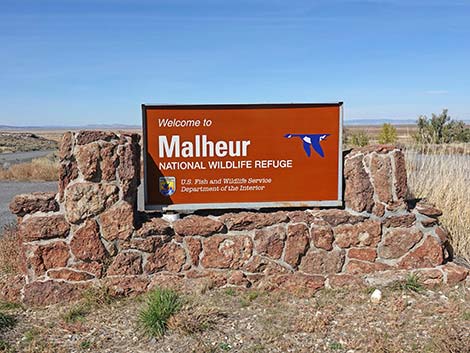 |
Overview Most of southern Oregon is sagebrush desert or mountains, but in the middle of the state, there is a broad sagebrush basin surrounded in the far distance by mountains. The mountains collect snow in the winter, which melts and flows into the basin during spring and summer. The resulting shallow ponds and marshes provide habitat for huge numbers of migrating waterbirds, and the trees and shrubs at Malheur National Wildlife Refuge headquarters attract an amazing variety of migrant landbirds. Activity on the refuge is driven by seasonal rhythm of the migrations. Spring and fall are the busiest seasons, and winter is quietest. The refuge has a small museum with a wonderful collection of stuffed birds and other items of interest from the area. Link to Map. |
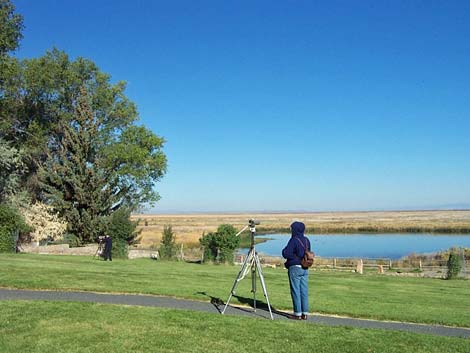 Birding the headquarters area during spring (view N) |
Description Malheur is a large refuge located along the pacific flyway in the northern Great Basin Desert. The refuge, about 40 miles long and 39 miles wide, includes about 187,000 acres of wetlands, riparian areas, meadows, and uplands. The refuge supports more than 320 species of birds, 58 species of mammal, 10 species of native fish, and a number of reptile species. Abundant water and food in the desert provide a place for migratory birds to stop, rest, and feed before continuing on their annual journey. Birds are always present on the refuge, but the migrations are the busy times of year (spring busier than fall), with some species nesting during summer, and a few species over-wintering. |
 Birding from the Visitor Center deck (view S) |
Spring is the busy time of year at the refuge, as many species using the Pacific Flyway stop here and in the farm fields around Burns. In February, ducks, geese, swans, and Sandhill Cranes begin to arrive. In March and April, waterfowl are abundant, and Sage Grouse are displaying. Shorebirds arrive in April, and songbird numbers peak in late May when waterfowl migration is waning. During summer, Sandhill Cranes, Trumpeter Swans, and a variety of ducks and shorebirds nest on the refuge (more than 130 species), and other species of waterfowl, shorebirds, and songbirds are common during June and July. Shorebirds return in early July to feed on the mud flats and alkali playas. Mule deer and pronghorn antelope also occur on the refuge. During fall, Sandhill Cranes stop to feed in September and October before moving south to California, but most species of ducks and geese migrate to the west of here. In November, Tundra Swans can be found in abundance. By late November, most migrating birds have headed south. |
 Rufous Hummingbirds at a headquarters feeder |
During winter, temperatures drop, the wetlands dry out, and most ponds freeze over. Some, however, remain open and provide food and water for wintering wildlife. Local populations of ducks, geese, and landbirds, including a variety of raptors and Black-billed Magpies, winter on the refuge. A complete list of birds and mammals on the refuge is available Refuge Headquarters or on the Internet. Location The refuge is located southeast of Burn, Oregon (south-central Oregon). Refuge Headquarters is located on the south side of Malheur Lake, about 32 miles southeast of Burns, on Highway 205. Hours The refuge is never locked, but it is a day-use area. The museum is open daily from dawn to dusk, and during summer, the Visitors Center at refuge headquarters is open daily 8-4. |
 Birding Benson Pond south of headquarters (view NE) |
Fees None. Specialties Ducks, geese, swans, shorebirds, raptors, warblers, swallows, and vagrants during migration. The refuge website provides a detailed chronology of bird activity at the refuge. Spring: Migrating waterfowl, Sage Grouse on leks, and shorebirds. Summer: Nesting Sandhill Cranes, Trumpeter Swans, ducks, and shorebirds. American White Pelicans, shorebirds, egrets, herons, coots, grebes, ducks, and songbirds are common. Migrant shorebirds return in July. |
 This refuge is a good place for a spotting scope (view E) |
Fall: Migrating Sandhill Cranes. Tundra Swans arrive. By late November, most migrating birds have passed. Winter: A few ducks and geese, and Tundra Swans over-winter. Wetlands dry out and most ponds freeze over. Common Ravens, Great Horned Owls, hawks, eagles, and Black-billed Magpies. Mule deer and pronghorn. During mild winters, some songbirds over-winter. For More Information Contact refuge personnel at 36391 Sodhouse Lane; Princeton, Oregon 97721; 541-493-2612 or visit their website. Download refuge brochure. A bird list is also available online (or snatch a PDF copy here). |
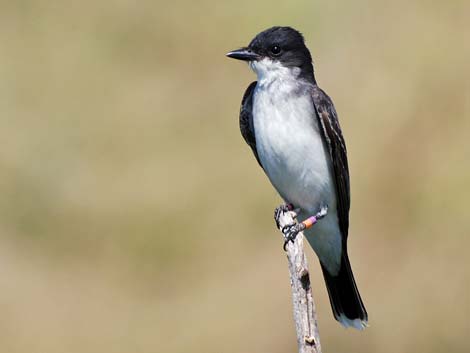 Banded Eastern Kingbird |
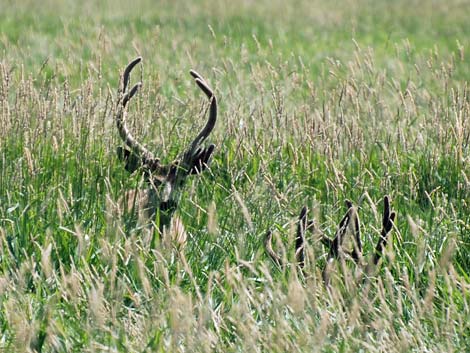 Boys hiding in the grass |
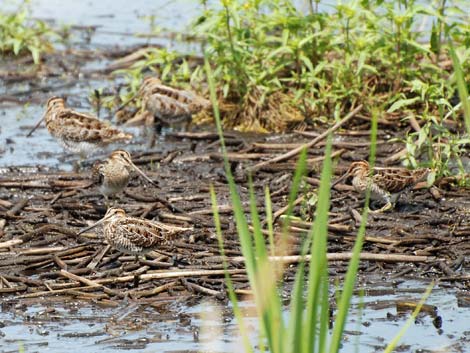 Wilson's Snipe blending into the background |
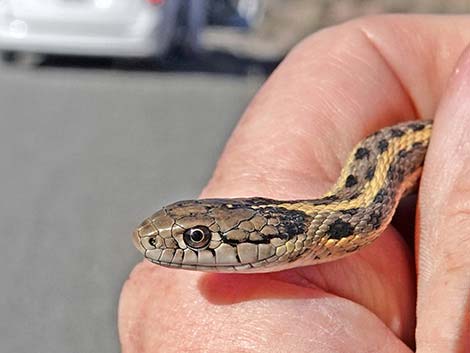 Garter Snake |
Visitor Center Area
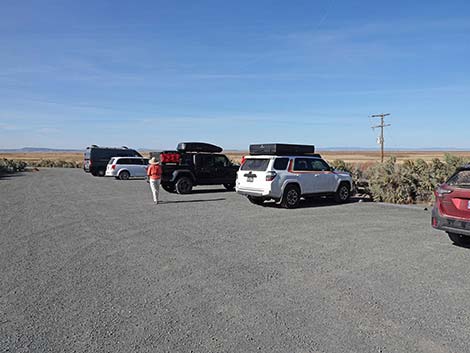 Visitor Center parking lot (view NE) |
 Visitor Center parking lot (view SE) |
 Reserved parking (view E) |
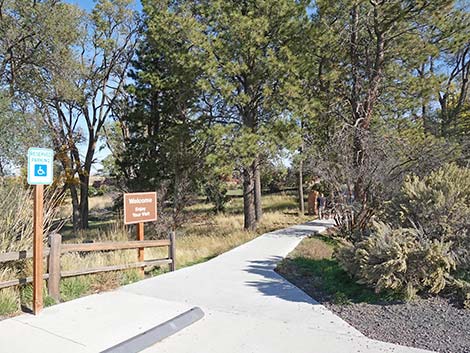 Start of trail to Visitor Center (view SE) |
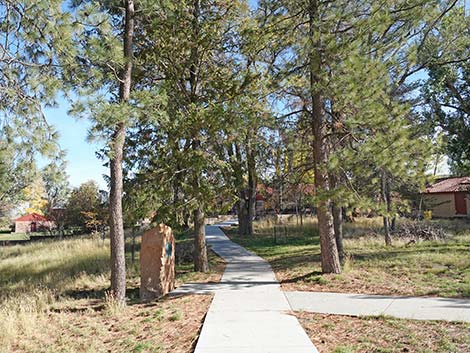 Accessible trail to Visitor Center (view SE) |
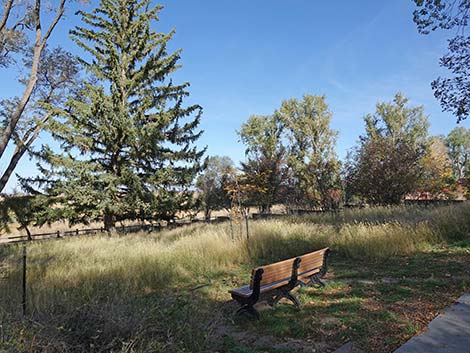 A bench to relax and watch birds in the trees (view E) |
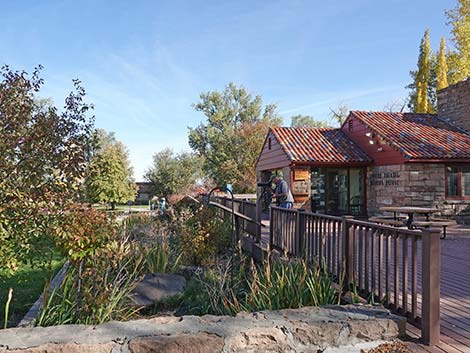 Accessible trail approaching the Visitor Center (view SE) |
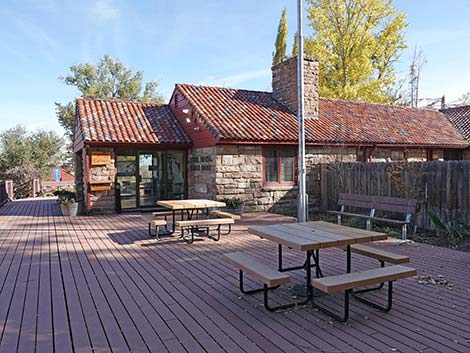 Deck outside the Visitor Center (view E) |
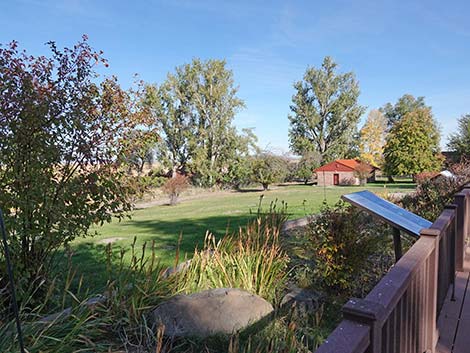 The Visitor Center deck is a good place to see birds (view NE) |
 Visitor Center entrance (view SE) |
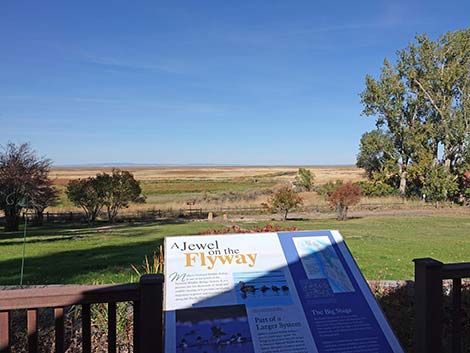 Information sign outside the visitor center (view N) |
 Trails out the back of the Visitor Center (view SE) |
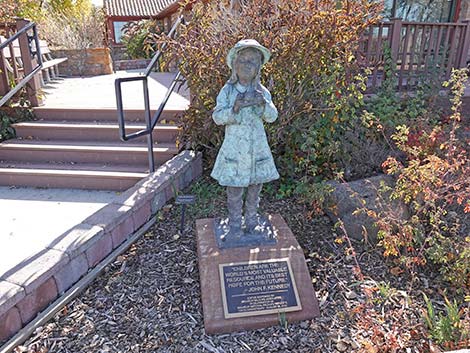 Children in nature are hope for the future (view S) |
 Broad lawn in front of the Visitor Center (view NE) |
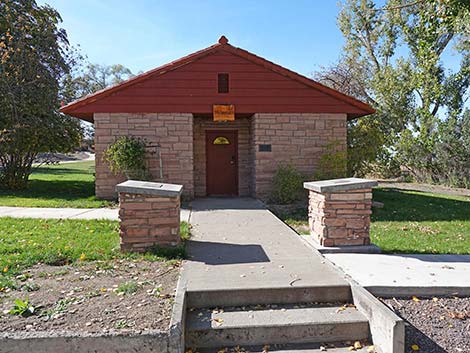 Museum building exterior (view W) |
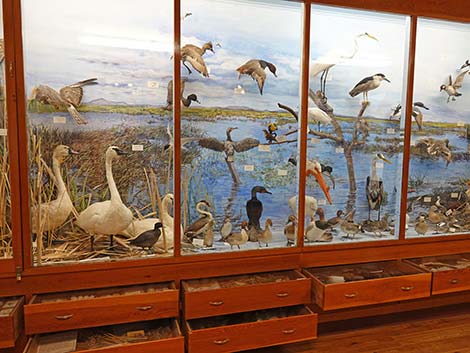 Museum building interior |
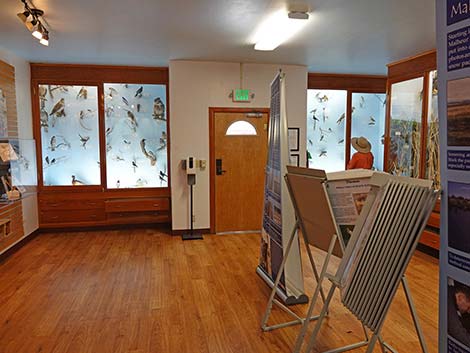 Museum building interior |
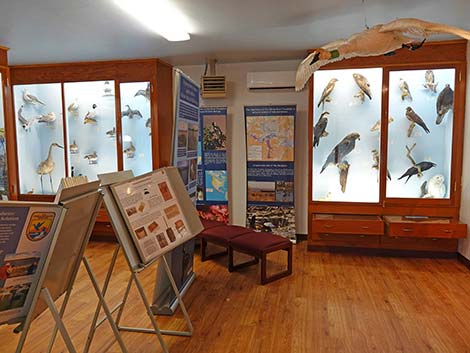 Museum building interior |
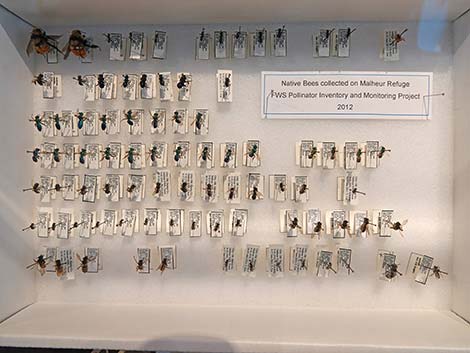 Museum building interior: native bees |
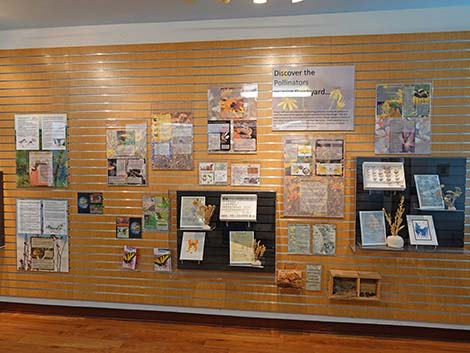 Museum building interior: pollinator display |
 Museum building interior: mounted local mammals |
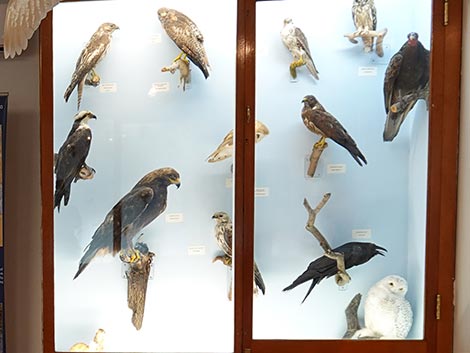 Museum building interior: mounted local birds of prey and allies |
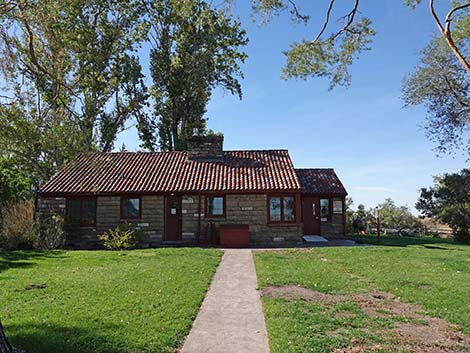 Cranes Nest Nature Center and Store (view W) |
 Cranes Nest Nature Center and Store (view W) |
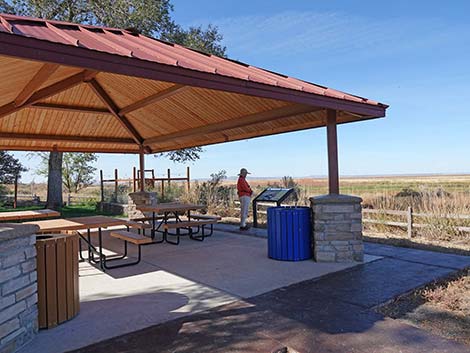 Picnic pavilion (view NW) |
 Accessible trail to bird viewing blind |
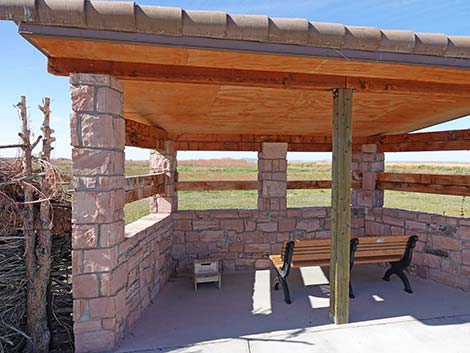 Bird viewing blind overlooking shallow pond (view NW) |
 In late fall, the shallow pond is dry (view NW) |
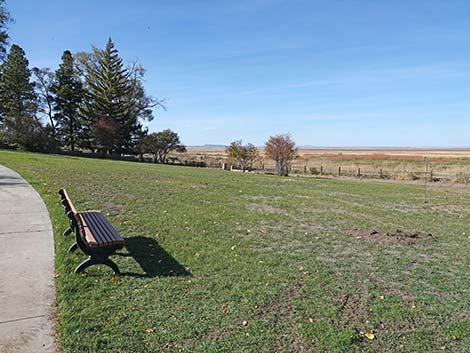 Returning back through the Visitor Center area |
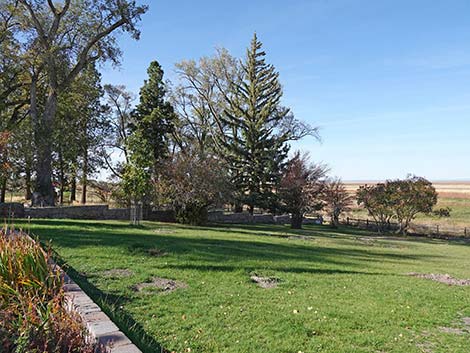 Returning back through the Visitor Center area |
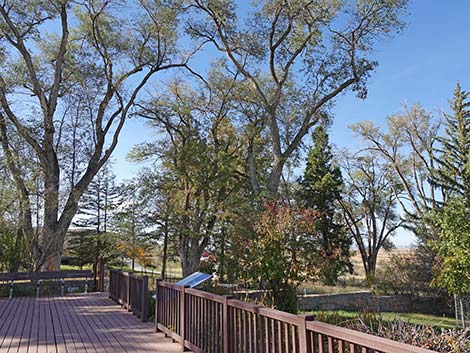 The Visitor Center porch is a good place to bird (view NW) |
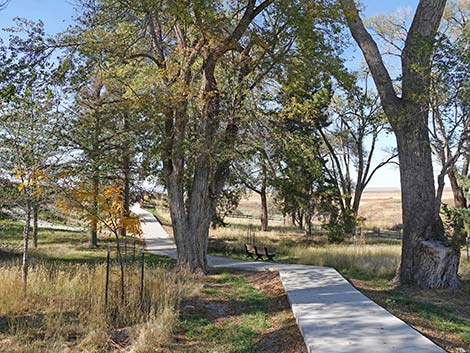 Returning through the trees to the parking lot (view NW) |
Central Patrol Road
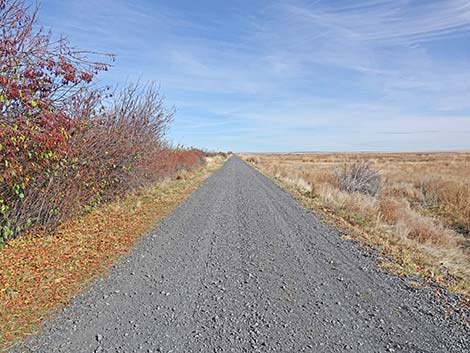 The Central Patrol Road is a well maintained gravel road |
 Canals provide good birding (view E) |
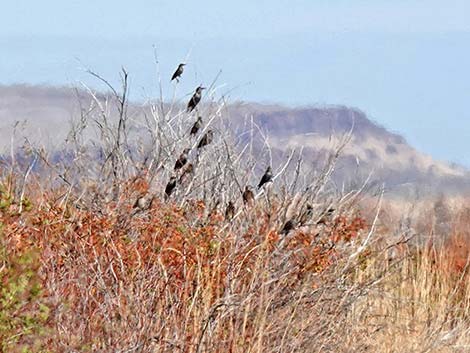 European Starlings in the hedgerow along the road |
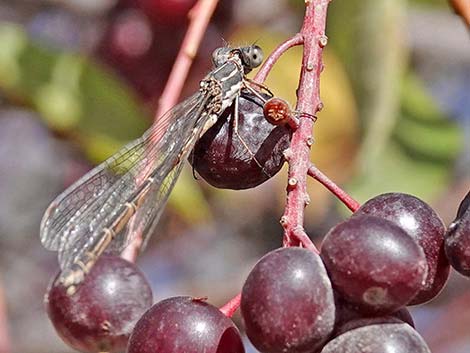 Spotted Spreadwing (Lestes congener) on Chokecherries |
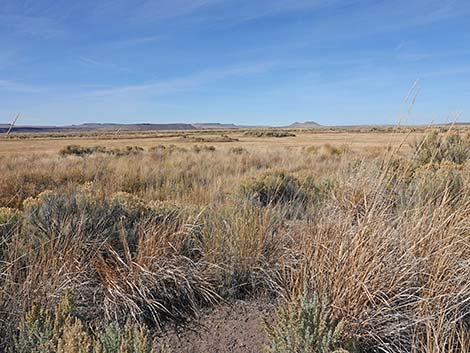 Upland shrubs in late fall (view NW) |
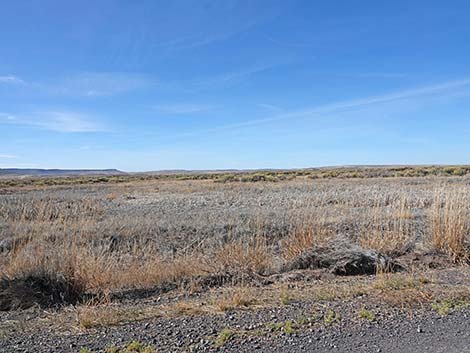 Dry wetlands in late fall (view NW) |
Benson Pond
 Benson Pond sign (view SE) |
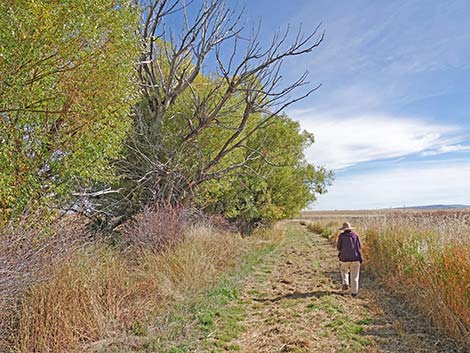 Trail to Benson Pond (view E) |
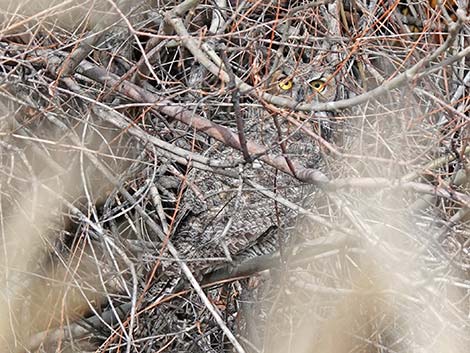 Great Horned Owl in the willows |
 Bushy-tailed Woodrat inside the historic cabin |
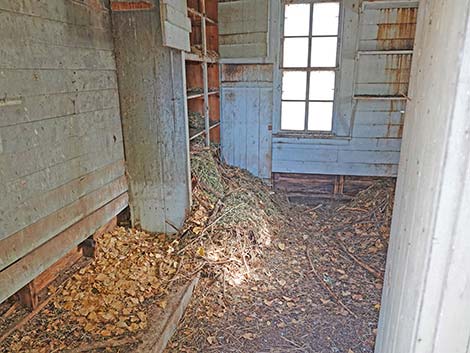 Inside the historic cabin, woodrats are filling the larder for winter |
 Inside the historic cabin, woodrats are filling the larder for winter |
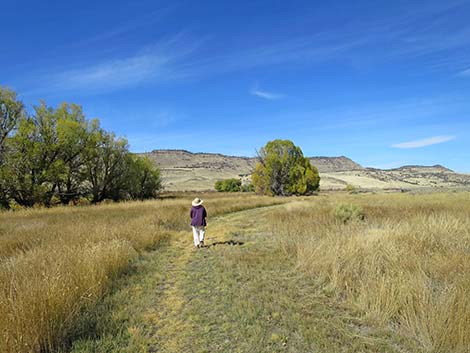 Trail departing the historic cabin (view SW) |
 Returning towards the willows (view SW) |
The Narrows
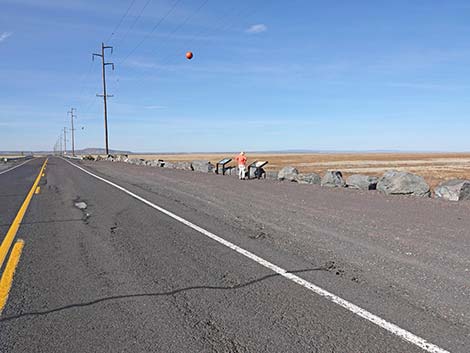 |
 |
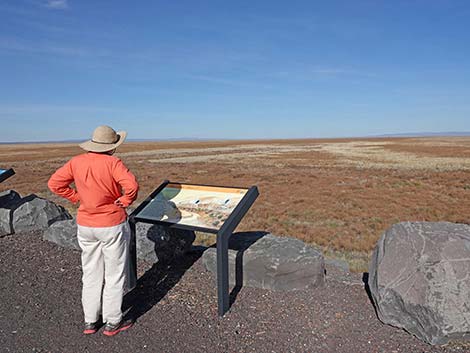 |
 |
Page Spring Campground
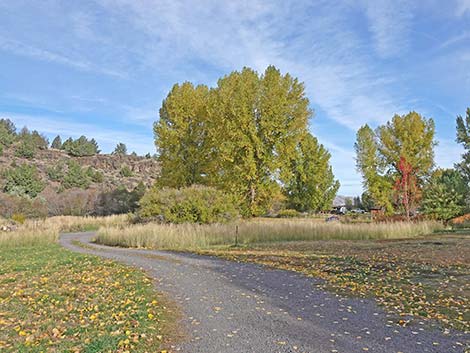 |
 |
Happy birding! All distances, elevations, and other facts are approximate.
![]() ; Last updated 240322
; Last updated 240322
| Favorite Places Far Away | Birding Around Las Vegas | Glossary | Copyright, Conditions, Disclaimer | Home |